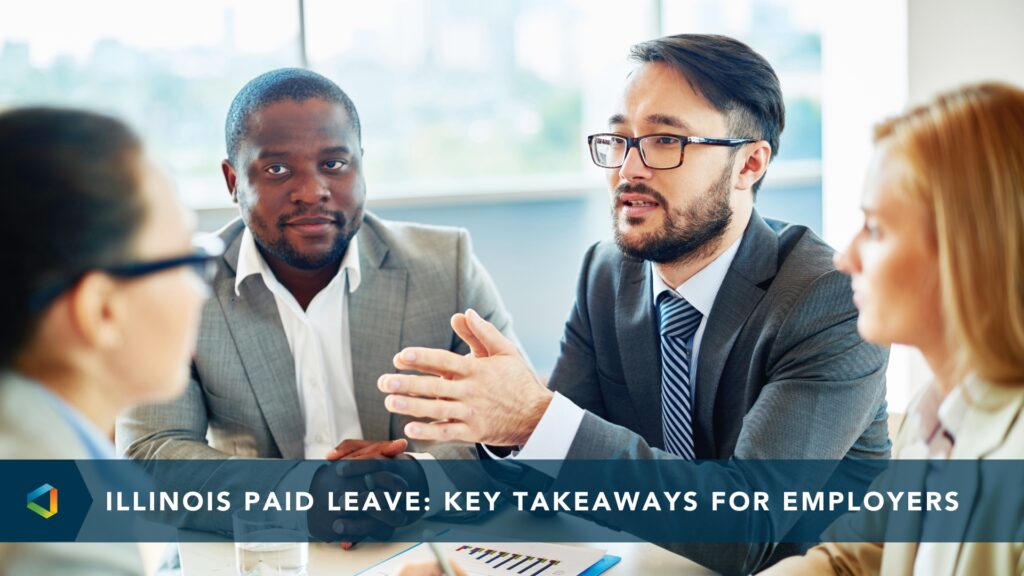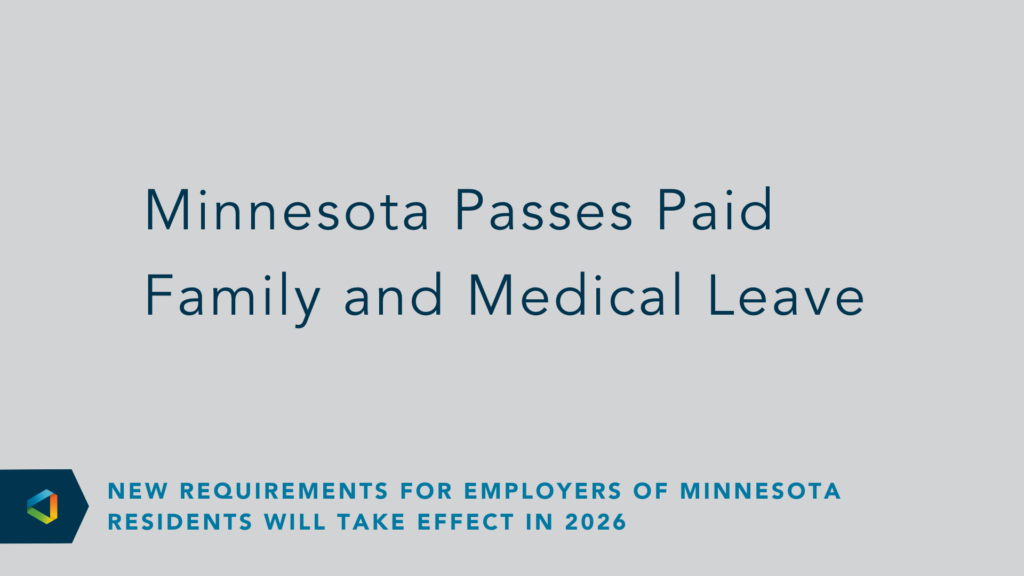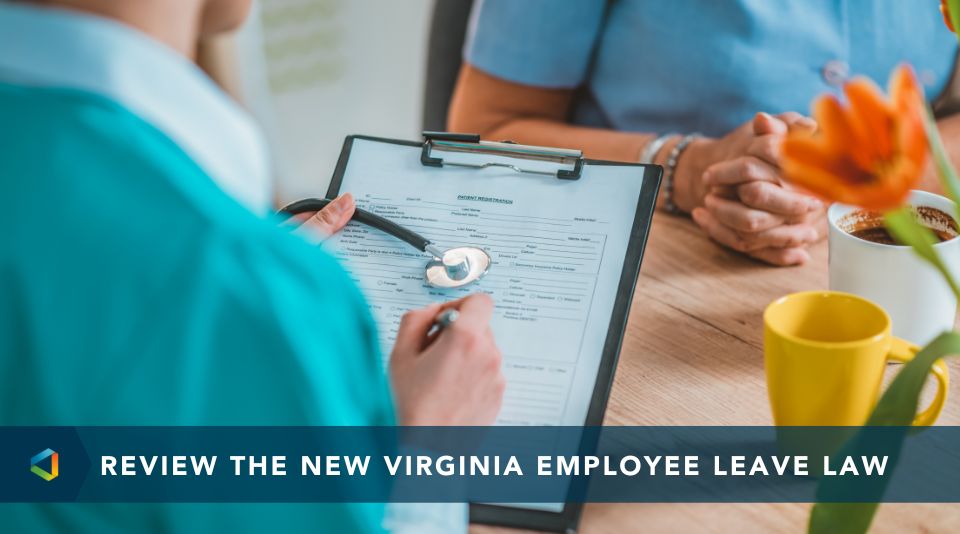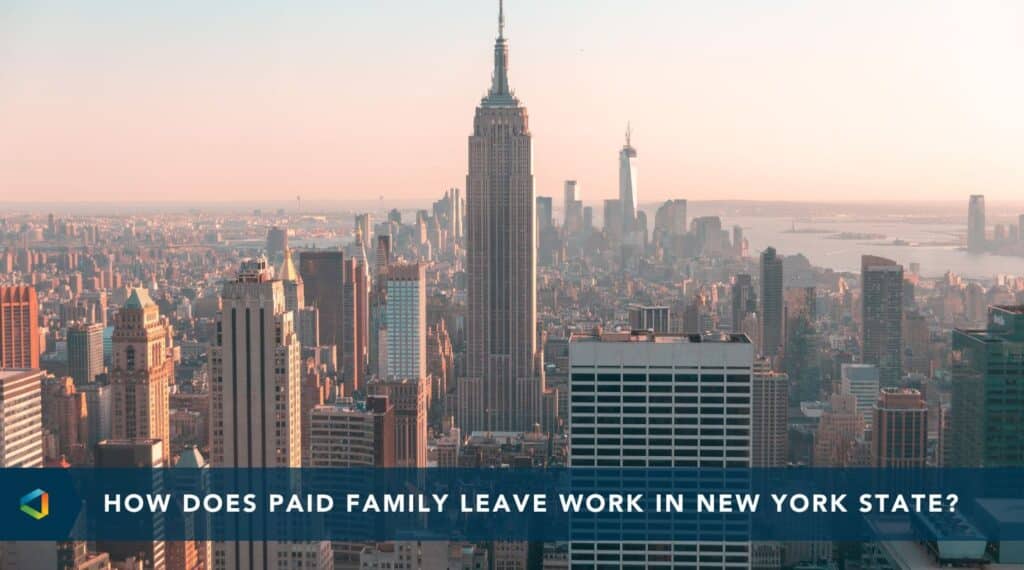Compliance Confidence
Delays and Changes to Maryland Paid Leave Law
Delays and Changes to Maryland Paid Leave Law
In April 2022, Maryland passed the Time to Care Act, creating a Family and Medical Leave Insurance (FMLI) program for Maryland employees.
The program was scheduled to go into effect this year. However, Maryland just passed a modifications bill (which is slated to be signed by the Governor later this month) that delays the program and includes several other modifications.
Tax contributions for the FMLI program will now begin on October 1, 2024 (instead of October 1, 2023). Eligible employees can start receiving benefits on January 1, 2026 (instead of January 1, 2025).
Does the Act apply to your company?
The Act applies to all employers with at least one employee in Maryland. Self-employed individuals are not required to comply, but may opt-in. Employers that have a private plan (employer-provided benefit, insurance, or a combination) can avoid the required tax contributions if their plan meets the following requirements:
- The plan must be offered to all eligible employees.
- The plan must meet or exceed the rights, protections, and benefits of the Act.
- The private plan’s weekly benefit amount shall be based on the average weekly wages of that employer rather than the State average weekly wage.
- The employer cannot charge employees more than the maximum contribution set by the MDOL.
- The plan must be filed with and approved by the Maryland Department of Labor (MDOL).
How is it funded?
Most employers and all employees will contribute towards the FMLI program cost, with payments starting on October 1, 2024. The Maryland Secretary of Labor will set the initial rate no later than October 1, 2023, which will be in effect from October 1, 2024 through June 30, 2026. The maximum contribution will be no more than 1.2% of each employee’s wages up to and including the Social Security wage base. Employers with 15 or more employees will pay 50% of the total rate, and employees (of all size employers) will pay 50% of the total rate, but employers may elect to pay the employee share.
Employers with fewer than 15 employees will not be required to contribute, but the employee share of the tax must be paid. Employers may also not be responsible for contributions if they are community-based agencies or programs funded by specific state programs.
In 2026 and every year thereafter, the contribution rate will be reviewed and a new rate will be announced by February 1st. New rates will go into effect on July 1st of the same year.
What employees are eligible?
A covered employee is any employee that has worked at least 680 hours over the 12-month period immediately preceding the date they start eligible leave.
Individuals who are receiving unemployment are not eligible for benefits under the Act. Employees receiving workers’ compensation benefits are also not eligible unless the workers’ compensation benefits are for a permanent partial disability.
What are the approved reasons for leave?
Covered employees can take leave under the following circumstances:
- During the placement of a child for foster care, kinship care, or adoption;
- To provide care during the first year after a child’s birth or after placement through adoption, foster placement, or kin care;
- To care for a family member experiencing a serious health condition;
- To care for their own serious health condition;
- To care for a service member who is next of kin; or
- For qualifying exigency due to a family member’s deployment.
What qualifies as a serious health condition?
A serious health condition is defined as an illness, injury, impairment, or physical or mental condition that involves either:
- Inpatient care in a hospital, hospice, or residential healthcare facility,
- Continued treatment by a licensed health care provider, or
- Continued treatment or supervision at home by a licensed healthcare provider or by an individual under the supervision of a licensed healthcare provider.
Serious health conditions that continue over an extended period of time and require intermittent treatment also qualify under the law.
How long does the leave benefit last?
Covered employees can use up to 12 weeks of leave benefits in an application year. The application year begins the first day of the calendar week when the employee applies for benefits. Covered employees may use an additional 12 weeks of leave only if their initial 12 weeks was either to care for a new child or due to their own serious health condition and the additional leave is for the opposite.
When leave is foreseeable, employees must provide 30 days written notice or as soon as practicable. If the employee requires intermittent leave, the employee must make a reasonable effort to schedule the leave so that it does not unduly disrupt employer operations. The employee must also provide reasonable prior notice of their need for intermittent leave and may not use leave increments of less than four hours.
Unlike the original law, employees will not be required to use or exhaust all employer-provided leave before or while receiving FMLI benefits. The employer may permit employees to use employer-provided paid leave while receiving FMLI benefits as long as the total does not exceed 100% of the employee’s average weekly wage. The employer may require that FMLI payments run concurrently or otherwise coordinate with employer-provided leave benefits for disability, parental care, family care, or military leave.
Leave taken under the Act will run concurrently with leave that would also be eligible under the federal FMLA. The MDOL may count the employee as having used FMLI if the leave was designated as FMLA, the employer informed the employee of their FMLI rights, and the employee declined to apply for FMLI benefits.
How much does the benefit pay?
A covered employee’s average weekly wage (AWW) is calculated by taking the total wages they received over the last 680 hours the employee was paid divided by the number of weeks worked. The employee’s AWW is then compared to the state’s AWW. If the covered employee’s AWW is 65% or less of the state AWW, the weekly benefit amount payable will be 90% of the employee’s AWW. If the covered employee’s AWW is greater than 65% of the state AWW, the employee’s weekly benefit amount with be the sum of:
- 90% of the employee’s AWW up to 65% of the state AWW, and
- 50% of the employee’s AWW that is greater than 65% of the state AWW.
In 2026, the weekly benefit amount payable will be at least $50, but not more than $1,000. By September 1st each year, the MDOL will announce whether the maximum benefit will increase based on the Consumer Price Index. Any increase shall only apply for claims filed after the date the increase becomes effective on the January 1st following the announcement.
The new bill removed a separate calculation of benefits for partial paid leave. Hopefully, the MDOL’s regulations will address how benefits will be paid for a partial paid leave.
Are there any job protection requirements?
Generally, employees must be restored to an equivalent position when they return from leave. An exception exists if necessary to prevent “substantial and grievous economic injury” to the employer’s operations, the employer notifies the employee, and the employee elects not to return to employment after receiving the notice.
Similar to the protections provided in the federal FMLA, employees will also continue to receive health benefits at their same cost while on leave.
Are there any notice requirements?
Employers must provide a notice to employees when they are hired and at least annually thereafter. Within five days of a request for leave that may be eligible, employers must also provide a notice that explains their rights to benefits, claims procedures, and other required information. The MDOL will develop standard notices for employers to distribute.
What happens when a claim is filed?
Once an employee files a claim, the MDOL will notify their employer within five business days. The MDOL will also notify the employee and employer if the claim was approved or denied within 10 business days. Approved claimants will receive their first payment within five business days of approval. Subsequent payments will be made every two weeks.
When will specific regulations be determined?
While the text of the new bill answers many questions, there are still a few questions left outstanding. The MDOL is now required to adopt specific regulations by January 1, 2024.
Got more compliance questions? You can learn more about OneDigital's compliance consulting practice here.
Want to learn more about legislation that protects the right of employees to take a leave of absence? Take a look at this roundup: Employee Leave - Clarifying STD, FMLA, and ADA.




